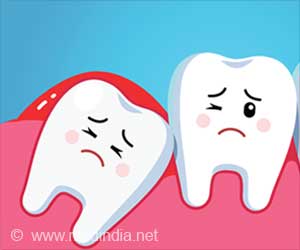A new avenue of research aims to eliminate chalky teeth and tooth decay in children, along with its disturbing costs to affected individuals and society.

‘Developing tooth surface is contaminated by a protein found both in the blood and tissue fluid surrounding the tooth to form discolored chalky teeth.’





One in five children have chalky tooth enamel, which is visible as discolored spots on tooth surface. It often causes severe toothache and decay, and sometimes leads to abscesses, extractions, and orthodontic problems.“The result is a sort of 'mineralization blockage', which is highly localized to the areas on individual teeth that become chalky enamel spots,” says Mike Hubbard, a University of Melbourne research professor and lead author on the report.
Researchers have shown instead that albumin leaks in occasionally at weak spots, binding to enamel-mineral crystals and blocking their growth. It is a very localized one.
They also suspect that the albumin leakage is triggered by routine baby illnesses such as a fever. Now they plan to determine the specific underlying causes, such as environmental factors or pathogens.
They will promote their findings to dentists, other child health professionals, and parents, and so they can all be on the lookout for chalky teeth.
Advertisement
There are several types of chalky teeth reflecting different causes such as genetic anomalies and problems with nutrition.
Advertisement
A tooth with severe hypomineralisation is 10 times more likely to decay than one without. It is very much a silent epidemic, causing lots of suffering.
The scale of the problem became apparent when fluoridation of community water supplies led to a big but incomplete reduction of tooth decay in children.
A substantial proportion of children with unexplained decay remained. So, researchers founded an education network called The D3 Group for developmental dental defects, to understand what was happening.
Fluoride, which protects against tooth decay in normal enamel, has little effect on chalky molars, which are prevalent in both developed and developing countries.
Building on this research breakthrough, and with appropriate resourcing, The D3 Group can now look towards a medical strategy for preventing this worldwide problem.
Source-Medindia








